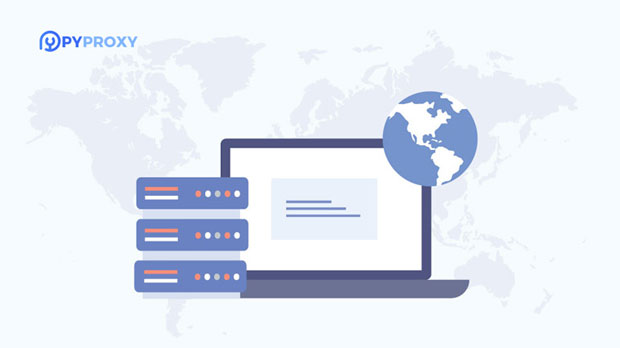When using public Wi-Fi, security concerns are heightened due to the lack of encryption and the ease with which hackers can intercept data. Many users opt for VPNs, proxies, or other methods to secure their internet activity. socks5 proxies are one such option, commonly used with web browsers like Google Chrome. While SOCKS5 proxies can offer a level of anonymity and bypass restrictions, they may not always provide full security. In this article, we will delve into the implications of using a socks5 proxy on public Wi-Fi, evaluating both its benefits and potential risks. Understanding SOCKS5 Proxy and Its PurposeTo assess the security of using a SOCKS5 proxy, it is essential to first understand what it is and how it works. SOCKS5 is a protocol that routes your internet traffic through an intermediary server, masking your original IP address. This provides a level of anonymity by making it appear as though your internet activity is coming from a different location. Unlike traditional proxies, SOCKS5 does not modify or inspect the data being transmitted. This means that it supports a wider range of protocols and applications, including P2P file sharing, without the limitations of other proxy types.However, SOCKS5 does not offer encryption by default, which is a crucial point when considering its use in public spaces like cafes, airports, or libraries, where the Wi-Fi network may be insecure.Security Risks of Public Wi-Fi NetworksPublic Wi-Fi networks, while convenient, are inherently less secure than private ones. These networks are often open or use weak encryption protocols that are vulnerable to hacking. Attackers can easily position themselves between your device and the public Wi-Fi router, allowing them to intercept your data. This kind of attack is known as a "man-in-the-middle" (MITM) attack.Without encryption, data sent over a public Wi-Fi network, such as login credentials, personal information, and payment details, can be captured by malicious actors. While using a SOCKS5 proxy might conceal your IP address, it does not inherently encrypt the data transmitted between your device and the proxy server.How Does SOCKS5 Proxy Work in Public Wi-Fi?When using a SOCKS5 proxy with Google Chrome on a public Wi-Fi network, your browser's requests are routed through the SOCKS5 server. This means your IP address is hidden from websites, and your browsing activity appears to originate from the proxy server's location. However, while this can provide privacy from websites, the data between your browser and the proxy server is still vulnerable to interception if no encryption is in place.For instance, when you connect to a SOCKS5 proxy on an unencrypted public Wi-Fi network, your internet traffic is exposed to anyone who might be monitoring the network. While SOCKS5 helps in hiding your IP address, it doesn’t encrypt the actual data packets. If you’re using websites that don’t use HTTPS (encrypted connections), your data could easily be intercepted and exploited by malicious actors.The Need for Encryption: Adding Layered SecurityGiven that SOCKS5 proxies don’t encrypt your internet traffic, it’s crucial to employ additional security measures when using public Wi-Fi. One of the most effective ways to secure your data is by using websites that offer HTTPS encryption. HTTPS ensures that the data sent between your browser and the website is encrypted, even if someone intercepts it on the network.In addition to using HTTPS websites, it’s advisable to consider combining the SOCKS5 proxy with other encryption protocols, such as tunneling your traffic through a VPN (Virtual Private Network). A VPN encrypts all of your internet traffic, ensuring that even if someone intercepts it, they won’t be able to decipher it. This combination of SOCKS5 with a VPN or HTTPS encryption is highly recommended for enhanced security when using public Wi-Fi.Potential Privacy Concerns with SOCKS5While SOCKS5 proxies can offer anonymity by hiding your real IP address, they are not foolproof when it comes to privacy. The proxy server itself can still log and track your browsing activity, which poses a privacy risk. Some proxies may even monitor the data being transmitted, potentially exposing your activity to third parties.If you are using a SOCKS5 proxy without encryption, there is a heightened risk that sensitive data could be exposed not only to malicious actors but also to the proxy provider itself. Many free proxy services may not offer a transparent privacy policy or may even sell your data to third parties for advertising purposes.What Other Security Measures Can You Take?To improve security while using a SOCKS5 proxy on a public Wi-Fi network, there are several additional steps you can take:1. Always Use HTTPS Websites: As mentioned earlier, HTTPS encrypts the traffic between your browser and the website, significantly improving security and protecting sensitive data.2. Enable Browser Security Features: Google Chrome has built-in security features that help protect against malicious websites, phishing attacks, and other risks. Always ensure that your browser is up to date and that features like Safe Browsing and HTTPS-Only Mode are enabled.3. Use Multi-Factor Authentication (MFA): For critical accounts such as email, banking, or social media, always enable multi-factor authentication. This adds an additional layer of security, even if your credentials are intercepted.4. Consider a VPN: Combining a SOCKS5 proxy with a VPN offers double protection. While the proxy masks your IP address, the VPN encrypts your traffic, ensuring that your data remains private even on an unsecured network.5. Avoid Sensitive Transactions on Public Wi-Fi: Refrain from conducting sensitive activities, such as logging into your bank account or making online payments, when connected to public Wi-Fi networks. If it’s absolutely necessary, ensure that you’re using a VPN.Conclusion: Is Using SOCKS5 Proxy Safe on Public Wi-Fi?Using a SOCKS5 proxy with Google Chrome on public Wi-Fi can offer a degree of anonymity by masking your IP address, but it does not provide encryption by itself. In environments where the Wi-Fi network is insecure, this lack of encryption makes your internet activity vulnerable to interception. While SOCKS5 proxies may help hide your identity, they don’t secure your data.To ensure your privacy and security, it’s crucial to employ additional layers of protection, such as using HTTPS websites, combining the SOCKS5 proxy with a VPN, and enabling browser security features. Additionally, avoiding sensitive transactions on public Wi-Fi is a wise precaution.In summary, while SOCKS5 proxies can enhance anonymity, they are not a comprehensive security solution on their own, especially when used on public Wi-Fi networks. Consider using them in conjunction with other security tools to safeguard your data and privacy effectively.
Jan 10, 2025






















































